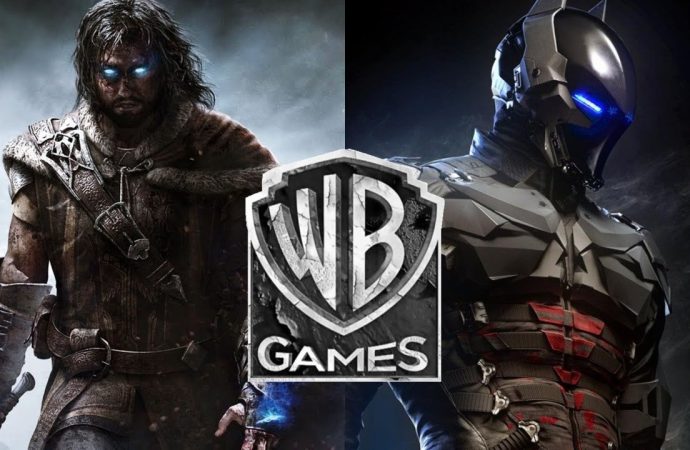Introduction In recent years, the landscape of entertainment has undergone a significant transformation. One of the most compelling developments in this arena is the rise of interactive storytelling. This innovative approach to narrative creation and consumption has captivated audiences by offering a more immersive and participatory experience. This article delves into the evolution, mechanics, and
Introduction
In recent years, the landscape of entertainment has undergone a significant transformation. One of the most compelling developments in this arena is the rise of interactive storytelling. This innovative approach to narrative creation and consumption has captivated audiences by offering a more immersive and participatory experience. This article delves into the evolution, mechanics, and impact of interactive storytelling in the entertainment industry.
The Evolution of Storytelling

Image by: Yandex.com
Storytelling is as old as human civilization itself. From ancient oral traditions to the written word, and from theater to film, the methods of telling stories have continuously evolved. Traditionally, storytelling has been a one-way street: the storyteller conveys a narrative to a passive audience. This dynamic began to shift with the advent of video games and digital media, laying the groundwork for what we now recognize as interactive storytelling.
Defining Interactive Storytelling
Interactive storytelling is a form of narrative where the audience has the ability to influence the storyline. Unlike traditional storytelling, where the plot is predetermined and linear, interactive storytelling offers multiple paths and outcomes based on the choices made by the audience. This can be achieved through various mediums, including video games, virtual reality (VR), augmented reality (AR), and even interactive films and television shows.
The Mechanics of Interactive Storytelling

Image by: Yandex.com
The core of interactive storytelling lies in its mechanics. These mechanics can vary widely depending on the medium and the level of interactivity. Here are some common elements:
- Branching Narratives: One of the most common mechanics, branching narratives allow the story to diverge based on the audience’s choices. Each decision can lead to different plot points, character developments, and endings.
- Player Agency: In video games, player agency refers to the level of control the player has over the story. High player agency means that the player’s actions significantly impact the narrative, while low player agency offers a more guided experience.
- Real-Time Decision Making: Some interactive stories require real-time decision making, adding an element of urgency and consequence to the choices made by the audience.
- Environmental Storytelling: This involves using the setting and environment to convey narrative elements. In video games, for instance, players might discover backstory and lore through exploration and interaction with the game world.
- Multiple Endings: To enhance replay ability and depth, many interactive stories offer multiple endings, encouraging the audience to explore different paths and outcomes.
The Impact of Technology

Image by: Yandex.com
The rise of interactive storytelling has been closely tied to advancements in technology. High-speed internet, powerful gaming consoles, and sophisticated software have made it possible to create complex, branching narratives that were once unimaginable. Virtual reality (VR) and augmented reality (AR) have further pushed the boundaries, offering fully immersive experiences that blur the line between the real and the virtual.
Case Studies in Interactive Storytelling
Several notable examples illustrate the potential and diversity of interactive storytelling:
- Video Games: Titles like “The Witcher 3: Wild Hunt” and “Detroit: Become Human” are celebrated for their intricate branching narratives and player agency. These games offer rich, immersive worlds where every choice matters.
- Interactive Films: Netflix’s “Bandersnatch,” an interactive film within the “Black Mirror” series, allows viewers to make choices that affect the storyline. This experiment in interactive cinema garnered significant attention and demonstrated the potential for mainstream interactive storytelling.
- Virtual Reality: VR experiences like “Half-Life: Alyx” and “The Walking Dead: Saints & Sinners” offer immersive storytelling where players physically interact with the environment, enhancing the sense of presence and agency.
- Augmented Reality: AR experiences, such as Pokémon GO, blend the real world with digital elements, creating interactive narratives that unfold in the player’s surroundings.
The Psychology of Interactive Storytelling

Image by: Yandex.com
Interactive storytelling taps into fundamental aspects of human psychology. The sense of agency and control over the narrative can lead to greater emotional investment and engagement. When audiences feel that their choices matter, they are more likely to be immersed in the story and form a deeper connection with the characters and plot.
Challenges and Future Directions

Image by: Yandex.com
While interactive storytelling offers exciting possibilities, it also presents unique challenges. Creating branching narratives requires significant resources and careful planning to ensure coherence and quality. Additionally, not all audiences may prefer interactive experiences, and some may find the abundance of choices overwhelming.
Looking ahead, the future of interactive storytelling is bright. As technology continues to advance, we can expect even more sophisticated and immersive experiences. Artificial intelligence (AI) and machine learning could play a significant role in creating dynamic, responsive narratives that adapt to individual preferences and actions.
Conclusion
The rise of interactive storytelling marks a significant shift in the entertainment industry. By offering audiences the ability to influence the narrative, this innovative approach creates more engaging and immersive experiences. As technology continues to evolve, the potential for interactive storytelling is boundless, promising a future where stories are not just told but lived.
Interactive storytelling is not just a trend; it is a fundamental evolution in how we create and consume narratives. It represents a new frontier in entertainment, one where the audience is not just a passive observer but an active participant in the unfolding story.
















